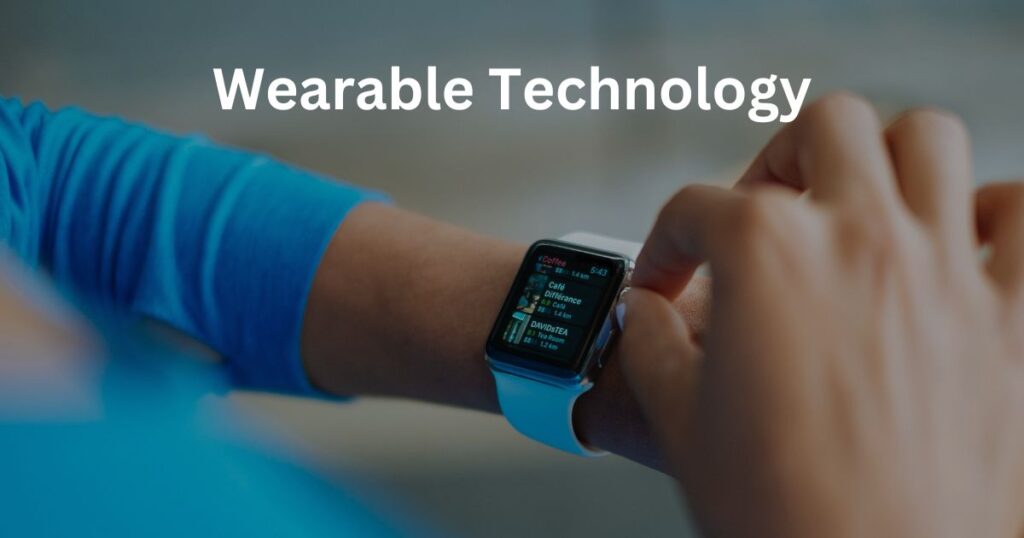
Wearable technology is an exciting and rapidly evolving field that has the potential to transform the way we live, work, and interact with the world around us. From smartwatches and fitness trackers to augmented reality glasses and smart clothing, wearable technology is already changing the way we think about personal technology.
One of the most significant benefits of wearable technology is its ability to improve health and fitness. Wearable fitness trackers, such as the Fitbit or Apple Watch, can track physical activity, monitor heart rate, and even monitor sleep quality. This can help individuals stay motivated and accountable regarding their health and fitness goals.
Another advantage of wearable technology is its potential to enhance productivity and efficiency. Smartwatches, such as the Apple Watch or Samsung Galaxy Watch, allow users to access information and notifications on-the-go, without the need to pull out their phone. This can save time and increase productivity, especially for individuals who are always on the go.
Wearable technology can also help individuals stay safe and connected. For example, some smartwatches have built-in fall detection and can automatically call for help in an emergency. Augmented reality glasses, such as the Microsoft HoloLens or Google Glass, can provide real-time information and alerts, improving safety in the workplace or hazardous environments.
Despite these benefits, there are also some potential drawbacks to wearable technology. One of the biggest concerns is privacy. Wearable technology collects personal data, such as location and health information, which can raise privacy concerns. Additionally, there is the risk of data breaches or hacking, which could compromise personal information.
Another concern is the potential health risks associated with long-term use of wearable technology. Some experts have raised concerns about radiation exposure and skin irritation from devices that are worn on the body for extended periods of time. Additionally, there is the risk of distraction or cognitive overload from constantly being connected to technology.
One potential solution to these concerns is for wearable technology companies to prioritize user privacy and safety in their designs. This can include implementing strong security protocols, being transparent about data collection and use, and incorporating features that prioritize user safety, such as automatic emergency alerts.
Overall, wearable technology has the potential to transform the way we live, work, and interact with the world around us. While there are some concerns to be addressed, the benefits of wearable technology are undeniable. By leveraging the power of wearable technology, we can improve our health and fitness, increase productivity and efficiency, and enhance safety and connectivity in our daily lives.
Advantages of Wearable Technology:
- Improved Health and Fitness: Wearable fitness trackers can help individuals track their physical activity, monitor their heart rate, and improve their overall fitness levels. This can lead to a healthier lifestyle and a reduced risk of chronic diseases.
- Increased Productivity: Wearable technology can help individuals stay connected and access information on the go, which can increase productivity and efficiency.
- Enhanced Safety: Wearable technology can help individuals stay safe by providing real-time monitoring and alerts. For example, some smartwatches can detect when a user has fallen and automatically call for help.
- Convenience: Wearable technology can be more convenient than traditional devices, as they are often hands-free and require minimal effort to use.
- Entertainment: Wearable technology can provide entertainment on the go, such as streaming music or watching videos on smart glasses.
Disadvantages of Wearable Technology:
- Cost: Wearable technology can be expensive, which may be a barrier to adoption for some individuals.
- Privacy Concerns: Wearable technology collects personal data, which can raise privacy concerns. There is also the risk of data breaches or hacking.
- Health Concerns: Some experts have raised concerns about the potential health risks associated with the long-term use of wearable technology, such as radiation exposure or skin irritation.
- Limited Battery Life: Wearable technology often has limited battery life, which can be a hassle for users who have to constantly charge their devices.
- User Experience: Some users may find the user experience of wearable technology to be confusing or difficult to navigate, which can be a barrier to adoption.
In conclusion, wearable technology has many potential benefits, including improved health and fitness, increased productivity, enhanced safety, and entertainment. However, there are also challenges and limitations, such as cost, privacy concerns, health risks, limited battery life, and user experience. As wearable technology continues to evolve, it will be important to address these challenges and ensure that users can fully realize the benefits of these devices.




